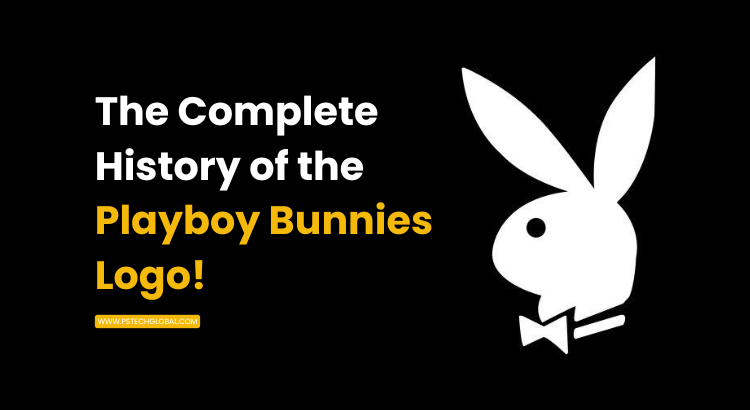The Complete History of the Playboy Bunny Logo
The sleek silhouette of a rabbit wearing a bow tie is one of the most recognizable brand symbols in the world. The Playboy bunny has transcended its origins as a simple magazine logo to become a cultural icon representing sophistication, rebellion, and a particular moment in American history. Let's explore the fascinating evolution of this famous emblem over its nearly 70-year history.
You may also like to check: Graphics Design and social media management services
Origins: The Birth of an Icon (1953-1954)
When Hugh Hefner launched the first issue of Playboy magazine in December 1953, the publication didn't yet have its famous bunny logo. That first issue, featuring Marilyn Monroe on the cover, used a stag as its animal mascot. However, Hefner quickly realized that the stag symbol was already being used by another men's magazine, "Stag Party," and needed a new, distinctive symbol.
Art Paul, Playboy's first art director, was tasked with creating a symbol that would be both playful and sophisticated. In early 1954, over the course of about half an hour, Paul sketched the now-famous rabbit head with a tuxedo bow tie. The choice of a rabbit was deliberately playful and suggestive, alluding to the animal's reputation for fertility and energy.
The first appearance of the bunny logo was subtle - a small endnote to articles in the second issue of the magazine. By the third issue, the bunny had become more prominent and began appearing on the cover, eventually becoming the magazine's official mascot.
Refinement and Standardization (1955-1960)
During these early years, the bunny logo underwent several subtle refinements as Art Paul experimented with different iterations. The bunny's silhouette became more streamlined and elegant. By 1956, the logo had been standardized to the clean, minimalist design we recognize today.
What makes the bunny logo so effective from a design standpoint is its simplicity - it works equally well at large or small sizes and is instantly recognizable even in silhouette form. This versatility would prove invaluable as the Playboy empire expanded beyond the magazine.
The Bunny Club Era (1960-1980s)
The bunny logo took on new life in 1960 with the opening of the first Playboy Club in Chicago. It was at this point that the "Playboy Bunny" became not just a logo but a costume worn by the club's waitresses. The Bunny costume—complete with ears, cottontail, and the mandatory bow tie—was designed by Zelda Wynn Valdes and became an immediate cultural sensation.
The Playboy Bunny costume was the first service uniform registered with the U.S. Patent and Trademark Office (U.S. Patent No. 762,884). The "Bunny Manual" given to employees was incredibly detailed, specifying exactly how the costume should be worn and how Bunnies should interact with customers.
During this period, the bunny logo also became more prominent on Playboy merchandise, expanding the brand beyond the magazine and clubs into clothing, accessories, and lifestyle products.
Global Expansion and Evolution (1980s-2000s)
As Playboy expanded internationally, the bunny logo became one of the world's most recognized trademarks. Interestingly, in many international markets where the magazine's content might have been controversial, the bunny logo could stand alone as a symbol of American luxury and sophistication, somewhat disconnected from its adult content origins.
In the 1980s and 1990s, as fashion cycles turned, the bunny logo experienced periods of both embracement and rejection by the mainstream. Sometimes it was seen as kitschy or passé, while at other times it was reclaimed as retro-cool.
Under Christie Hefner's leadership (Hugh's daughter who served as CEO from 1988-2008), the company worked to position the bunny logo as a symbol of luxury lifestyle rather than just adult entertainment. This period saw careful management of the logo's use, with high-end licensing deals keeping the symbol associated with quality.
Digital Age and Rebranding Efforts (2000s-2010s)
The early 2000s brought new challenges for Playboy and its iconic logo. The internet had disrupted the traditional adult entertainment business model, and the company struggled to define its place in the digital landscape.
In 2010, Playboy launched a "safe for work" website, attempting to separate its lifestyle content from its more adult-oriented material. During this period, the bunny logo sometimes appeared in more subtle or stylized forms in an effort to appeal to a broader audience.
A major change came in 2016 when Playboy magazine temporarily stopped publishing nude photos, repositioning itself as a lifestyle magazine for the millennial generation. The bunny logo remained, but the company attempted to imbue it with new meaning—less about explicit sexuality and more about freedom and sophistication.
You may also like to read: Ray-Ban Branding Secrets: How the Iconic Eyewear Brand Dominates Marketing
Modern Reclamation and Legacy (2017-Present)
By 2017, Playboy had reversed course on some of its rebranding efforts, returning to its more traditional adult content, albeit with a more modern and inclusive approach. Throughout these shifts in business strategy, the bunny logo has remained remarkably consistent in its basic design.
In recent years, there's been a fascinating reclamation of the bunny symbol by various groups. Some feminist designers and artists have reappropriated the logo as a symbol of sexual autonomy rather than objectification. Vintage Playboy merchandise has become collectible, with the bunny logo appearing on everything from high fashion runways to streetwear.
In 2021, a major development occurred when Playboy went public via a SPAC merger under the ticker PLBY, with the bunny logo prominently featured in its corporate identity. The company positioned itself as a consumer lifestyle brand built around pleasure and leisure, with the bunny serving as the connecting thread across generations.
Design Evolution and Variations
Throughout its history, the basic bunny silhouette has remained remarkably consistent, though there have been subtle evolutions and various approved variations:
-
The Standard Profile - The classic right-facing silhouette with bow tie remains the primary logo.
-
The Full Bunny - Occasionally, a full-body bunny (standing upright in a tuxedo) has been used for special applications.
-
The Reversed Bunny - A left-facing version sometimes appears for design symmetry in certain layouts.
-
The Metallic Bunny - Gold and silver versions became popular for merchandise in the 1970s.
-
The Patterned Bunny - The silhouette filled with patterns or images for special editions or collaborations.
Art Paul, who created the original design, once commented that the genius of the logo was its adaptability—the basic shape could be reinterpreted endlessly while remaining recognizable.
Cultural Impact
Few corporate logos have achieved the cultural impact of the Playboy bunny. It has appeared in countless films, television shows, artworks, and fashion designs. The bunny has been referenced, parodied, and homaged across popular culture, from James Bond films to The Simpsons.
The logo's influence extends beyond entertainment into discussions of branding, design, and cultural symbolism. Design schools often cite it as a perfect example of an effective logo—simple, memorable, adaptable, and loaded with meaning that transcends language barriers.
Conclusion: The Bunny That Endures
Nearly seven decades after Art Paul's quick sketch, the Playboy bunny remains one of the world's most recognized logos. It has outlasted countless other cultural symbols of its era and continues to evolve in meaning while maintaining its visual integrity.
The endurance of the Playboy bunny logo speaks to the power of simple, effective design. While the Playboy brand has navigated changing social attitudes, business challenges, and multiple reinventions, its rabbit mascot has remained a constant—adapting just enough to stay relevant while maintaining the essential character that made it iconic in the first place.
Whether seen as a symbol of sexual liberation, American pop culture, retro nostalgia, or sophisticated lifestyle branding, the bunny with the bow tie has earned its place in the pantheon of design classics—a testament to how a thoughtfully created symbol can transcend its original purpose to become a true cultural icon.






























